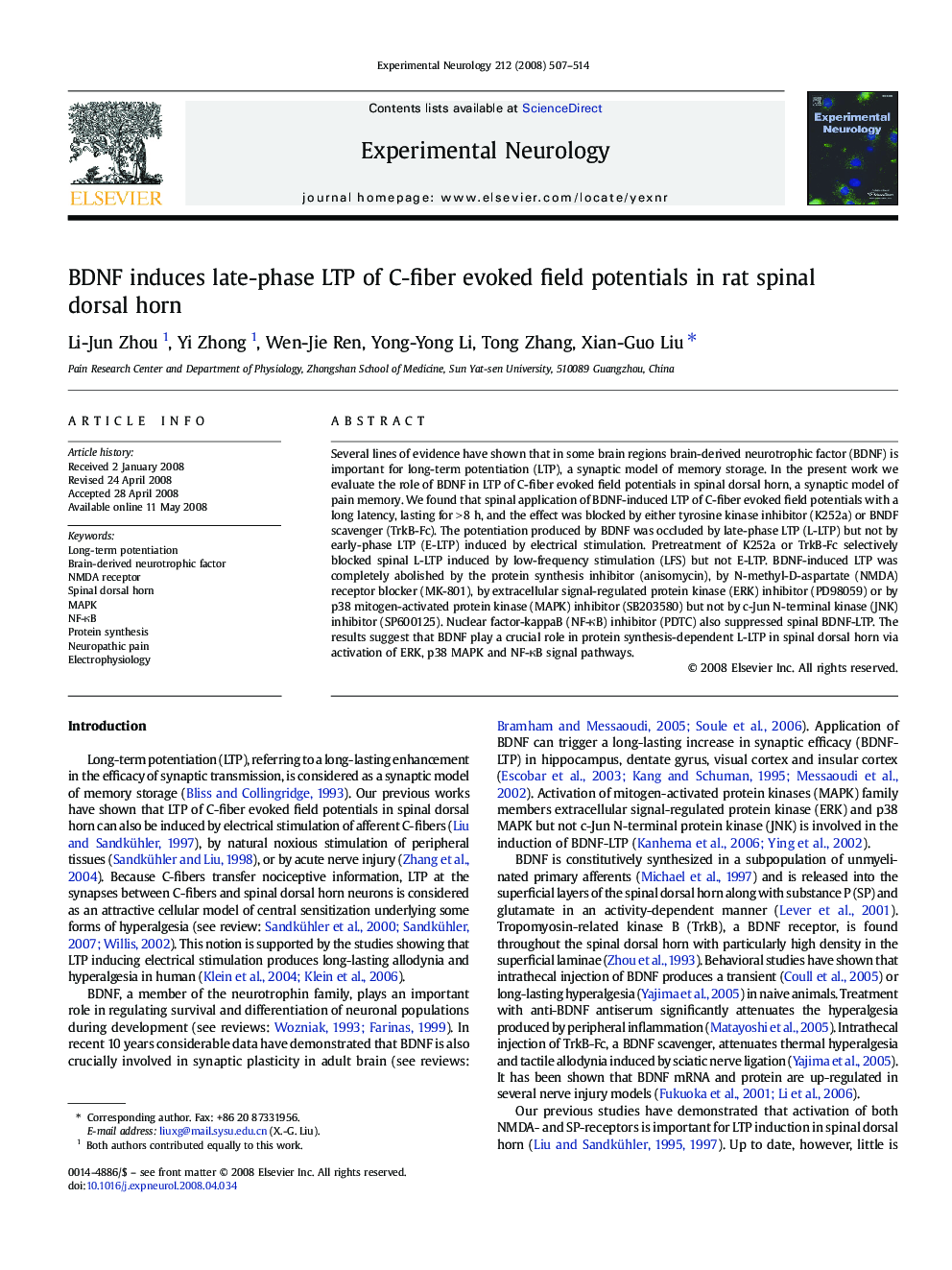| Article ID | Journal | Published Year | Pages | File Type |
|---|---|---|---|---|
| 3056576 | Experimental Neurology | 2008 | 8 Pages |
Several lines of evidence have shown that in some brain regions brain-derived neurotrophic factor (BDNF) is important for long-term potentiation (LTP), a synaptic model of memory storage. In the present work we evaluate the role of BDNF in LTP of C-fiber evoked field potentials in spinal dorsal horn, a synaptic model of pain memory. We found that spinal application of BDNF-induced LTP of C-fiber evoked field potentials with a long latency, lasting for > 8 h, and the effect was blocked by either tyrosine kinase inhibitor (K252a) or BNDF scavenger (TrkB-Fc). The potentiation produced by BDNF was occluded by late-phase LTP (L-LTP) but not by early-phase LTP (E-LTP) induced by electrical stimulation. Pretreatment of K252a or TrkB-Fc selectively blocked spinal L-LTP induced by low-frequency stimulation (LFS) but not E-LTP. BDNF-induced LTP was completely abolished by the protein synthesis inhibitor (anisomycin), by N-methyl-D-aspartate (NMDA) receptor blocker (MK-801), by extracellular signal-regulated protein kinase (ERK) inhibitor (PD98059) or by p38 mitogen-activated protein kinase (MAPK) inhibitor (SB203580) but not by c-Jun N-terminal kinase (JNK) inhibitor (SP600125). Nuclear factor-kappaB (NF-κB) inhibitor (PDTC) also suppressed spinal BDNF-LTP. The results suggest that BDNF play a crucial role in protein synthesis-dependent L-LTP in spinal dorsal horn via activation of ERK, p38 MAPK and NF-κB signal pathways.
